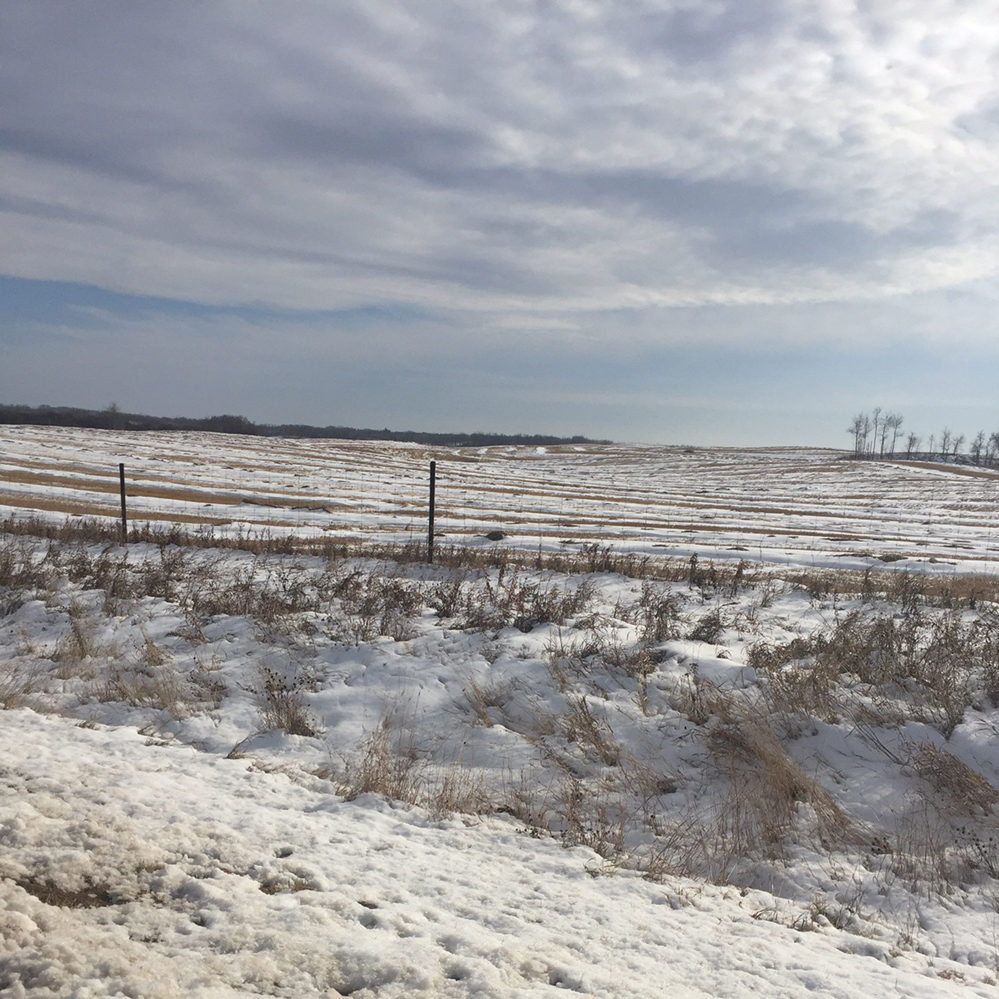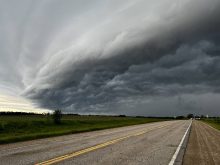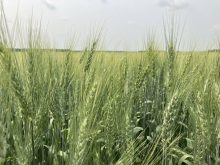Alberta Wheat wants the Canadian Grain Commission to “modernize” its grading system, saying it doesn’t align with market demands of international buyers.

“It all comes down to wanting more objective measurements for quality standards,” said Kevin Auch, chair of the Alberta Wheat Commission.
“We’ve got some pretty good grading standards — don’t get me wrong — but some of the things we’re measuring are not what the buyers are looking for.”
For example, the current system measures sprouting which can result in poor-quality bread. But poor-quality bread is also related to the “falling number” — a measure of the quality of the dough — and that isn’t measured by Canadian grading standards.
“Why aren’t we just measuring the falling number rather than the sprout?” asked Auch, who grows wheat, pulses, and oilseeds near Carmangay.
The measuring of sprouting levels can vary quite a bit, and can’t always be determined by visual appraisal, he added.
Read Also

Farming Smarter receives financial boost from Alberta government for potato research
Farming Smarter near Lethbridge got a boost to its research equipment, thanks to the Alberta government’s increase in funding for research associations.
“You have a kernel that’s got one-inch sprout coming out of it, and that’s an extreme. You could also have another kernel that is considered sprouted, but you need a magnifying glass to see it. There may be a drastic difference in the falling numbers between those two different seed lots.”
Calls for replacing visual proxies with instrument measurements aren’t new. In 2005 the Canadian Wheat Board proposed falling number be an official grading factor as many customers include falling number in their purchase specifications.
Falling number is an internationally recognized proxy for determining alpha amylase, the enzyme that affects break making.
Falling number is calculated by recording the time it takes a plunger to fall in a test tube containing a slurry of water and wheat flour. The faster the plunger falls, the lower the viscosity of the solution and the poorer the bread-making quality.
Measuring falling number the traditional way is time consuming, but there are machines such as the Rapid Visco Analyzer, that do it faster. But when the grain commission studied the machines a decade ago it found they weren’t accurate enough when used outside a lab. As a result the commission didn’t make the change.
Usually changes to wheat grading come slowly. For example in October, the grain commission revised its standards for mildew, which is caused by various fungi under wet conditions. As a result now wheat can have more mildew before being downgraded. But the change followed two years of research by the CGC and consultations with end-users.
‘Lost value’
The bottom line is “a potential for lost value” for Prairie farmers, he said.
The situation is the same with fusarium-damaged kernels. These damaged kernels are counted when quality is assessed, but the grain is sold based on how much deoxynivalenol (DON) is in the grain sample.
“Again, if you aren’t actually measuring what the concern of the buyer is, which is the DON, you may get some loss in value to the farmer who grew that product,” said Auch.
Alberta Wheat would also like to see Canada’s mildew guides aligned with U.S. standards, a move the Canadian Grain Commission doesn’t agree with, said Remi Gosselin, head of communications at the grain commission.
“Part of the reason our grading system was designed the way it is, is because of environmental factors Prairie wheat crops are subjected to,” said Gosselin. “Complete alignment with the U.S. may not be in Canada’s best interests, specifically for producers or for customers. The vast majority of American wheat crops is not subjected to the frost and the wet weather conditions that western Canadian wheat crops are subjected to.”
The grain commission is aware of Alberta Wheat’s concerns and “we will be responding to those concerns,” he added.
“The grain commission is taking steps and has made it a key priority to make sure that our grading system is based on science,” said Gosselin. “We’ll be making a move from subjective visual factors to objective analytical factors.”
In the coming months, the Winnipeg-based agency’s grain research laboratory and industry services division will set up a team to undertake that task. The process will involve engaging with affected industry and producer groups.
“It’s important to understand that a significant change of this nature has many aspects and will take significant time to implement,” said Gosselin.
Before any change can occur, the eastern and western standards committees will need to be involved. The committees include farmers and representatives from processors, exporters, and government. Medicine Hat producer Scott Lehr sits on the Western Grain Standards Committee as Alberta Wheat’s rep.
“The committees work to make sure that the grading system reflects the interests and concerns of all parts of Canada’s grain sector,” said Gosselin. “Constant review is occurring to ensure that the grading system continues to be relevant to the grain sector as a whole and to buyers of Canadian grain.”
Any changes will also require money, including the purchase of equipment that can test the falling numbers.
“There are some grain companies that have those machines in their elevators,” said Auch. “There is that ability, but like any machine that tests some of this stuff, they’re expensive. But how expensive is it to have farmers’ grain being downgraded because the falling number is fine, but it has visual sprouts or sprouting damage?”
Even though any changes would come well after this year’s rain-battered crop is sold, Auch said he is looking ahead.
“By putting testing procedures and machines in place in the delivery points, that would be modernizing the system,” he said. “At one time, they probably didn’t have protein testers in the system, but that’s just standard now. And that’s what we’re asking for.”
– With files from Allan Dawson
















